'G' Men

Brief Synopsis
Cast & Crew
William Keighley
James Cagney
Margaret Lindsay
Ann Dvorak
Robert Armstrong
Barton Maclane
Film Details
Technical Specs

Synopsis
James "Brick" Davis, a struggling attorney, owes his education to a mob member named McKay, but refuses to get involved with the underworld. When his friend Eddie Buchanan is gunned down by gangster Brad Collins while on assignment for the Justice Department, Brick decides to give up the law for a career with the Department. He says goodbye to his benefactor and to his girlfriend, Jean Morgan, a singer in McKay's nightclub, and heads for training in Washington, where he immediately takes a dislike to his boss, Jeff McCord. He flirts, unsuccessfully, with Jeff's sister Kay, but earns the respect of another seasoned department man, Hugh Farrell. Despite Brick's natural aptitudes and his inside knowledge of mob activities, Jeff refuses to put him on a case even when he positively identifies Danny Leggett as one of the criminals. Jeff gives Farrell the assignment, and he's killed in the line of duty. Jeff and Brick take over the case, tracing the gang to McKay's Wisconsin lodge, with the help of Jean, who is now married to mob member Brad Collins. In a violent exchange, McKay and most of the mob are killed. Collins is still at large and wounds Brick when he attempts to warn Jean. While Brick is hospitalized, Collins kidnaps Kay and shoots Jean when he discovers she has betrayed the gang. Brick reaches her before she dies, and she discloses Collins' plan to use Kay to get through the police barriers. Brick wounds Collins fatally, and rescues Kay, who now agrees to marry him.

Director

William Keighley
Cast
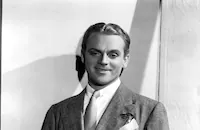
James Cagney

Margaret Lindsay

Ann Dvorak

Robert Armstrong
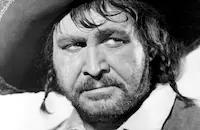
Barton Maclane
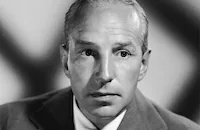
Lloyd Nolan
William Harrigan

Russell Hopton
Edward Pawley
Noel Madison
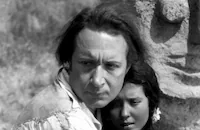
Monte Blue
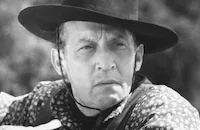
Raymond Hatton

Addison Richards

Regis Toomey

Harold Huber
Huey White
Glen Cavender

Emmett Vogan
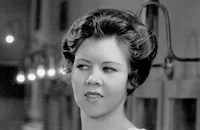
Mary Treen
John Impilito
Pat Flaherty
Bruce Mitchell
Monte Vandegrift
John Hale

Edward Keane

James Flavin
James T. Mack
Frank Shannon
Frank Bull
Martha Merrill
Gene Morgan
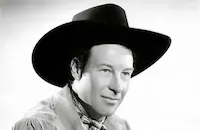
Gordon Elliott
Perry Ivins
Joseph Destefani
Gertrude Short
Adrian Morris
Crew
Lou Edelman
Sammy Fain
Leo F. Forbstein
Frank B. Gompert
Al Green
Chuck Hansen
John J. Hughes
Stanley Jones
Irving Kahal
Jack Killifer
William Kuehl
Seton I. Miller
Orry-kelly
Sol Polito
Jack L. Warner
Perc Westmore

Photo Collections
Videos
Movie Clip



Trailer
Film Details
Technical Specs

Award Nominations
Best Writing, Screenplay
Articles
G-Men
Cagney plays "Brick" Davis, a lawyer who's put through law school by a powerful gangster (William Harrigan.) When Davis' friend - an FBI man who was not legally allowed to carry a gun - is shot dead, Davis joins the Bureau. Upon receiving his training, he travels to New York City and tells the mob, including his mentor, that he's coming to get them. Soon, Davis captures Public Enemy Number One (Edward Pawley) and wins the respect of his fellow agents. Later, when several G-men are shot dead (in a scene that's a close re-creation of the real-life "Kansas City Massacre" of 1933), a new law is enacted that allows FBI agents to use firearms.
Now we're talkin'! This was the crime movie equivalent of "virtuous" producers filming Bible stories because they could get away with illustrating the many types of sin complete with writhing bodies and sexual situations. As long as Cagney was ventilating criminals during his brutal outbursts, everything was hunky-dory with the Hays Office. So ventilate he did.
'G' Men was Hollywood's attempt to once again make heroes out of the good guys, after several years of audiences cheering for charismatic killers and thieves. Even though Cagney was originally one of those killers, his volatile acting style had a way of winning over viewers. Will Rogers once said of the actor, "Every time I see him work, it looks to me like a bunch of firecrackers going off."
FBI director J. Edgar Hoover was thrilled with all the free publicity generated by 'G' Men. Hoover, of course, was a big blowhard who was never shy about promoting his own myth. He was eventually so taken with this sort of picture, he actually lobbied Franklin Roosevelt to let the FBI open its own movie studio. Roosevelt, needless to say, didn't think much of the idea.
Cagney's unexpected switch to the right side of the law was played to the hilt by Warner Brothers' publicity department. Given the tone of 'G' Men's newspaper ads, you'd think he was saving souls instead of merely shooting character actors: "Public Enemy Becomes 'Soldier of the Law'! Hollywood's Most Famous Bad Man Joins the G-Men and Halts the March of Crime!" The hyperbole worked wonders. 'G' Men was such a big hit, Warner Brothers would periodically re-release it to rake in a few more bucks.
It may have been way over the top, but not everything about 'G' Men was make-believe. There's a moment during the picture when Cagney's character is hiding behind a stack of logs while the bad guys fire away. It looks utterly convincing, and it should- Keighley insisted on using real bullets while he filmed it! Incredibly enough, this wasn't the first time Cagney had been shot at with live ammo on-camera. But it scared the hell out of him, and he decided it would be the last.
Three years later, while filming Angels with Dirty Faces (1938), Cagney refused to stand for a one-shot when director Michael Curtiz insisted on firing actual bullets. "I got out of the scene," Cagney later said, "and Burke, the professional machine gunner, fired the shots. One of the bullets hit the steel edge of the window, was deflected, and went right through the wall where my head had been." Had Cagney played along with Curtiz, Angels with Dirty Faces, and a great actor's life, would have ended somewhere in the middle. And Yankee Doodle Dandy (1942), for which both Cagney and Curtiz later won Oscars, might not have even been made!
Directed by: William Keighley
Screenplay: Seton I. Miller
Cinematography: Sol Polito
Art Direction: John Hughes
Editor: Jack Killifer
Principal Cast: James Cagney ("Brick" Davis), Ann Dvorak (Jean Morgan), Robert Armstrong (Jeff McCord), Lloyd Nolan (Hugh Farrell), William Harrigan (McKay), Edward Pawley (Danny Leggett), Regis Toomey (Eddie Buchanan).
BW-87m. Closed captioning.
by Paul Tatara

G-Men
'G' Men - James Cagney in 'G' MEN on DVD
The story: Struggling young attorney James "Brick" Davis (Cagney) closes his practice and signs up with the Department of Justice's recently-formed Bureau of Investigation after his friend Eddie Buchanan (Regis Toomey), an agent for the Bureau, is killed trying to apprehend gangster Danny Leggett (Edward Prawley). Raised on the streets, Davis' intimate knowledge of many of the top hoods proves indispensable in their capture, but it raises the suspicions of his superior Jeff McCord (Robert Armstrong). McCord learns that Davis' education was paid for by bootlegger "Mac" McKay (William Harrigan) and is prepared to have him removed from the service, but relents when the tyro agent passionately explains his desire to avenge Buchanan and serve the law. As the battle between the gangsters and the Bureau heats up, Davis' past ties create an increasing number of personal complications: his now-honest benefactor McKay meets with tragedy and old flame Jean Morgan (Ann Dvorak) is discovered to be married to top mobster Brad Collins (Barton MacLane). Davis is on the brink of resigning when news comes in that Collins has kidnapped the woman he loves--Jeff's sister Kay McCord (Margaret Lindsay). Brushing aside doctors and climbing out of his hospital bed, Brick rushes to rescue Kay and have a final showdown with the ruthless crime lord.
"G" Men delivers all the fights, car chases and shootouts a gangster movie fan could want, but differs from its recent predecessors by painting the hoods as one-dimensional, unappealing thugs instead of charismatic figures fighting their way to the top in a corrupt world. Furthermore, they are demoted from lead characters to supporting players. Taking center stage are the G-Men of the title, celebrated as a morally righteous bulwark against a tidal wave of crime. Much of the story takes the form of a police procedural, a sub-genre that would not become fully developed for another ten years or so when Twentieth Century Fox kicked off a string of pseudo-documentary crime films with The House on 92nd Street (1945). Early scenes depict the training methods of the Bureau of Investigation, the efficiency of the organization and the advanced scientific techniques used to analyze evidence. (Science is always emphasized in these films to impress the audiences with how sophisticated crime fighting has become, but there's also the subtle suggestion that the Bureau's men are never wrong and won't ever misuse their power because all their decisions are validated scientifically.) Given that the film offers a glowingly positive portrayal of the Bureau and argues strongly for rewriting laws to grant it greater authority, it's surprising to learn from Richard Jewell's commentary track that Warner Bros. received no cooperation from the government during production. However, Bureau Director J. Edgar Hoover cast aside any reservations he may have had once he saw the finished product and endorsed the film enthusiastically. Thanks in large part to the success of "G" Men, the FBI started to view popular culture as an excellent method to mold its public image and began eagerly cooperating with the creators of movies, radio shows and comic books.
William Keighley's direction is assured and polished. His work isn't as stylish or snappily paced as that of Warners' Michael Curtiz, but Keighley was a solid professional who enjoyed a long career at the studio, including four more films with Cagney (Each Dawn I Die (1939), Torrid Zone (1940), The Fighting 69th (1940) and The Bride Came C.O.D. (1941)). The opening scenes do a good job of quickly introducing us to Cagney's Brick Davis and his background, including the gangsters he grew up around and Jean Morgan, who is working as a performer in McKay's nightclub. To assure audiences that Cagney is still the same tough, streetwise mug he was in his gangster pictures in spite of being on the right side of the law, Seton I. Miller's script has him decking a gangster in the opening scene merely for suggesting that he might be doing shady work for McKay. Once Davis joins the Department of Justice the pace slackens a bit due to some formulaic plotting, with the Brick Davis-Jeff McCord relationship clearly modeled after military films in which a brash young recruit and a crusty sergeant grow to have a grudging respect for one another. Brick also has a standard "meet cute" scene with Kay, and predictably their early scenes together play up her annoyance with his smart-alecky manner. (Movie fans instantly recognize this as a sign that they are destined to fall in love.) After an agent is killed while transporting an arrested gangster, the film fortunately abandons the formulaic character development and kicks into high gear with a series of exciting action scenes, climaxing with the tense confrontation between Davis and Collins.
The driving force propelling the film along is, of course, James Cagney. Perhaps the most magnetic and vibrant actor of the era, Cagney plays his scenes with an unaffected emotional directness that is very appealing. Many stars might have come across as weak in the scene where Davis begs McCord not to drop him from the Bureau; Cagney impresses us with his sincerity, passion and humility. He is able to express a great deal with an economy of means. Note, for instance, the slow, mischievous smile he flashes Collins early in the film after the gangster threatens him with a gun. It reveals Brick's attitude at the moment more effectively than any dialogue. In action scenes, Cagney moves with a litheness influenced by his dance training, but always makes it look completely natural. Throughout the film he is effortlessly charming, ably demonstrating why he remains, to this day, one of the great Hollywood stars.
Cagney is surrounded by a capable supporting cast. The talented Ann Dvorak, memorable as Cesca in Scarface, is terrific as Jean, bringing humanity to what could have been a stock "gangster's moll" role; we're touched by her unrequited love for Brick. Margaret Lindsay, stuck with the comparatively colorless "good girl" part, does her best but can't quite spark her underwritten character to life. King Kong's Robert Armstrong is effective as Jeff McCord, avoiding "gruff tough guy" clichés and balancing the character's determination and courage with intelligence and empathy. It's unfortunate that the success of the film appears to have done little to help his career; after "G" Men his resume is dominated by B movies and TV appearances. A young Lloyd Nolan has a small but memorable role as a government agent, foreshadowing his later appearances in The House on 92nd Street and The Street With No Name.
Warner Home Video's DVD of "G" Men features a flawless transfer of the 1949 reissue version of the film, which adds a brief prologue depicting an FBI agent (David Brian) preparing to show the film to a class to teach them how things were in the early days of the Bureau. The extras are plentiful. The viewer can watch the film by itself or with the "Warner Night at the Movies" option, in which the feature is preceded by a selection of short subjects: an excerpt from a newsreel about real G-Men; a trailer for Devil Dogs of the Air starring Cagney and Pat O'Brien; the comedy short subject The Old Gray Mayor, starring Bob Hope in a role resembling an early version of the comic persona he would cultivate in his later features; and Buddy the Gee Man, an early, cutesy black and white Looney Tune made before the Warners cartoons developed their distinctive, anarchic style. The aforementioned feature commentary by Richard Jewell strikes a good balance between covering the making of the film and discussing real-life events that influenced the storyline. A new 20-minute documentary, Morality and the Code: A How-To Manual for Hollywood, features film historians, actors, producers and directors discussing the Pre-Code era of filmmaking and the beginnings of the Breen Office. Rounding out the extras are the trailer for "G" Men, the short subject How I Play Golf by Bobby Jones No. 11: Practice Shots in which Cagney appears; and a rare, fascinating Warner Bros. blooper reel called Things You Never See on the Screen: Breakdowns of 1935.
"G" Men is available individually or as part of the Warner Bros. Pictures Tough Guys Collection, which also includes Bullets or Ballots, San Quentin, A Slight Case of Murder, Each Dawn I Die and City for Conquest.
For more information about "G" Men, visit Warner Video. To order "G" Men, go to TCM Shopping.
by Gary Teetzel
'G' Men - James Cagney in 'G' MEN on DVD
Quotes
They're in that circle somewhere.- Jeff McCord
Only six states. We've got them cornered.- James 'Brick' Davis
Trivia
J. Edgar Hoover, Director of the FBI, personally approved the script for this movie. He even assigned actual FBI agents to monitor its production and ensure that it was accurate in every detail. When it grossed over $1,000,000 (an astronomical sum for a film in 1935), he was extremely pleased. There were two famous federal law enforcement agencies in the early part of the 20th century. They were the "G-Men" of the FBI, who worked for the Justice Department, and the "T-Men" who worked for the Treasury Department. Hoover was intensely interested in his "G-Men" winning the publicity and popularity rivalry. This movie certainly helped!
Notes
The film's working title was The Farrell Case. Gregory Rogers, listed as the author of the novel, was a pseudonym of Darryl F. Zanuck, formerly the head of production at Warner Bros. When the film was re-issued on 1949 to commemorate the 25th anniversary of the F.B.I., Warner Bros. added a prologue which featured David Brian. According to modern sources, J. Edgar Hoover gave the film a Dept. of Justice seal of approval and was consulted on the casting of the leading men. Modern sources note that the film was banned in Chicago because of its violence. Although he did not receive an onscreen credit as story writer, Zanuck was a write-in candidate for an Academy Award in the Writing (Original Story) category.















